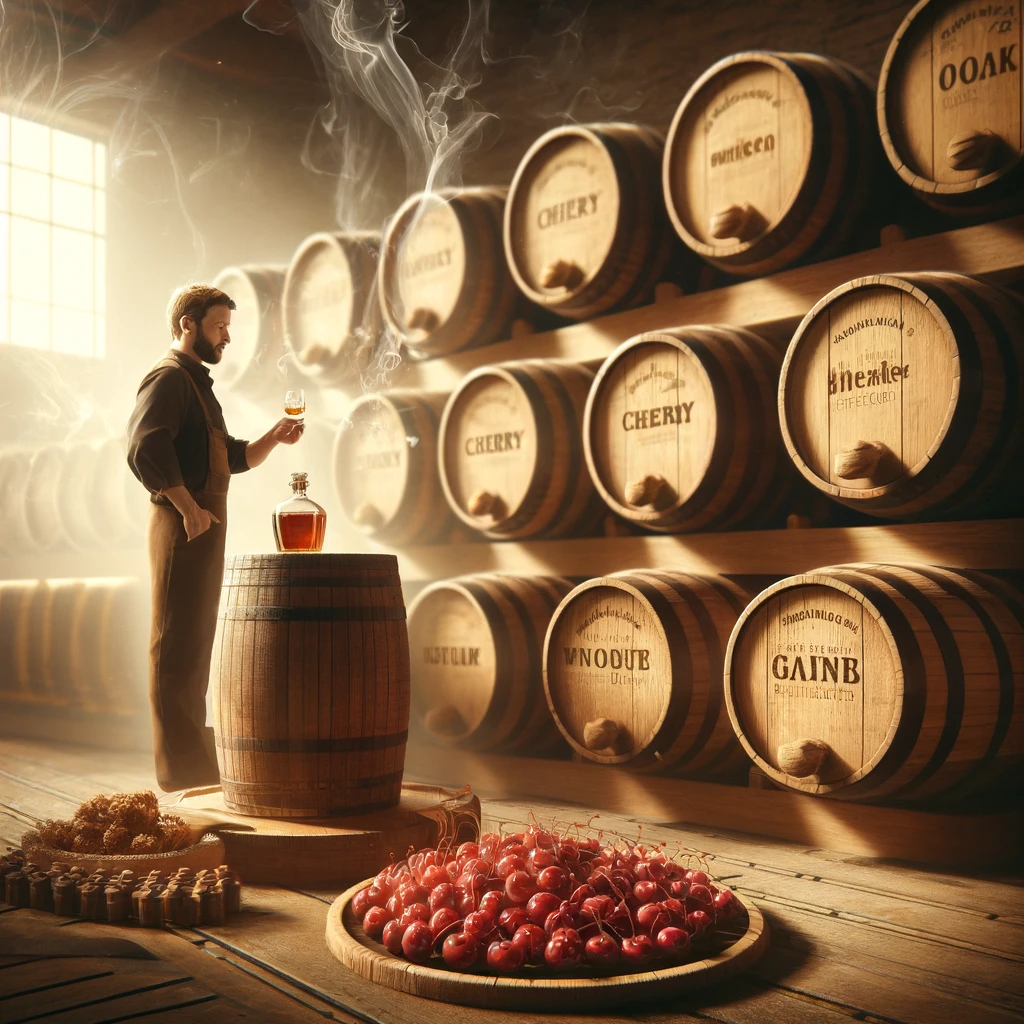Table of Contents
In the world of spirits, the art of aging is as much a craft as the distillation process itself. But what exactly is aging, and why is it done? Aging refers to the process of storing distilled spirits in barrels for a period of time after distillation and before bottling. This crucial phase is undertaken to enhance the flavor, aroma, and overall complexity of the spirit. As the spirits rest in barrels, they interact with the wood, absorbing its compounds. This interaction introduces a range of flavors and aromas to the spirit that were not present post-distillation. Additionally, aging allows for slow oxidation and evaporation, known as the “angel’s share,” where some of the spirit evaporates through the wood, concentrating the flavors and softening harsh alcohols. These changes are fundamental to developing a refined and rounded character in the spirit, transforming raw distillates into smooth, mature products.
The barrel aging of spirits such as whiskey, rum, and brandy is not just a necessary step in production but a transformative journey that imbues each drink with unique flavors, aromas, and character. The choice of wood—often oak, but also cherry, maple, and others—plays a pivotal role in shaping the final product. Let’s delve into how different types of wood influence the flavor profiles of these beloved spirits.

Oak: The Quintessential Choice
Oak barrels are the gold standard in spirit aging. This wood type is prized for its strength, workability, and ideal balance of flavor compounds, including tannins, vanillin, and lignin. When spirits like whiskey and rum age in oak barrels, they absorb these compounds, which impart rich flavors of vanilla, caramel, and spices. Oak’s porous nature also allows for a controlled amount of oxygen to enter the barrel, aiding in the oxidation process that rounds out the harsher edges of a spirit.
Different species of oak, such as American, French, or European, also play a role in flavor differentiation. American oak tends to impart sweeter and more robust vanilla flavors, while French oak offers subtle spice and sophisticated silkiness to the spirit.
Cherry Wood: A Sweet and Fruity Twist
While less traditional than oak, cherry wood barrels are becoming more popular for aging spirits like brandy and specialty whiskeys. Cherry wood imparts a lighter, fruitier profile with hints of red fruits like cherries and raspberries, complemented by a mild, sweet spiciness. This wood can enhance the spirit’s natural fruit flavors without overwhelming its delicate nuances, making it an excellent choice for brandies and flavored spirits.
Maple Wood: Smooth and Complex
Maple wood is another intriguing choice for spirit aging, particularly for craft distilleries experimenting with whiskey and rum. Barrels made from maple wood contribute a smooth, creamy texture to the spirit, along with flavors of butter, nuts, and a subtle smokiness. Maple can also introduce a hint of sweetness that recalls the syrup produced from the same trees, adding a unique twist to the traditional profiles found in barrel-aged spirits.
The Impact of Barrel Char
Apart from the type of wood, the level of char applied to the inside of the barrels also significantly affects the flavor. Charring the wood catalyzes chemical reactions that enhance the extraction of flavorful compounds. A heavier char can introduce smoky notes and a greater depth of flavor, while a lighter char allows the natural qualities of the wood and the spirit to shine through more prominently.
Crafting the Perfect Spirit
The interaction between the wood and the spirit over time is an intricate dance influenced by numerous factors, including the type of wood, the climate in which the barrels are stored, and the duration of aging. Each variable can be tweaked to achieve desired flavor profiles, making barrel aging a true art form practiced by skilled artisans across the globe.
As consumers continue to seek out unique and complex spirits, the exploration and utilization of different woods for aging will likely expand, offering new tastes and experiences in the evolving world of distilled spirits. Whether aged in the traditional oak, the fruity cherry, or the smooth maple, each barrel-aged spirit carries the signature of its wooden vessel—a testament to the transformative power of wood in the art of spirit making.
How useful was this post?
Click on a star to rate it!
Average rating 0 / 5. Vote count: 0
No votes so far! Be the first to rate this post.
